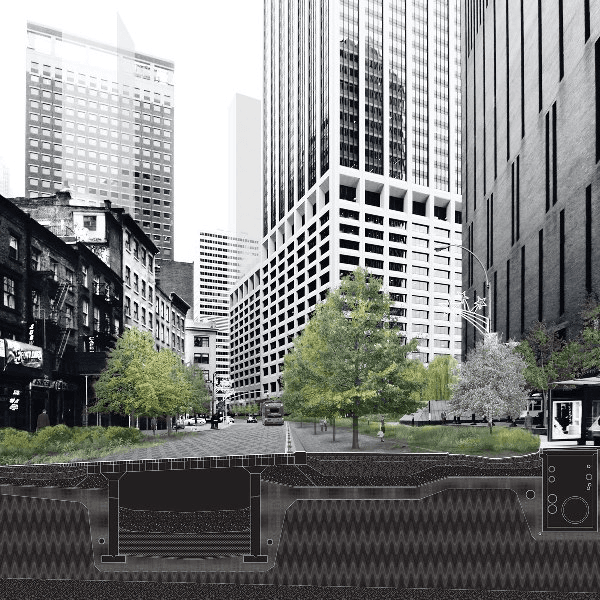Architect proposes natural-inspired rethink of New York City waterfront
This redesigned area of the New York waterfront is designed to deal with rising water levels, not just push it back (Photo courtesy of Architecture Research Office and dlandstudio.)
Hurricane Sandy has made it clear that flooding is not only a New Orleans problem in the United States.
Some of the country’s densest population centers are also extremely vulnerable to rising sea levels and storm surges. For cities like New York, altering the design of the cities’ waterfronts is a problem of a gigantic scale.
Politicians, including New York Governor Andrew Cuomo, tend to talk about sea walls as a large, expensive, yet easily envisioned solutions to the problem of coastal flooding.
See a slideshow of images of proposed changes to the New York City waterfront at Studio360.org.
But Adam Yarinsky, principal and co-founder of the Architecture Research Office, says he’s wary of hard constructed boundaries as a single solution.
“What’s the back-up if the barrier fails?” he asked.
For the last decade, Yarinsky and other planners, engineers, and architects have worked on solutions for urban coastal flooding. In 2010, several of these proposals made up a Museum of Modern Art exhibit called Rising Currents.
Yarinsky calls Sandy “an opportunity, not simply a catastrophe. And it’s something that can improve the quality of life in the city quite a bit.”
ARO teamed up with landscape architect Susanna Drake to create a plan for Lower Manhattan’s waterfront. Yarinsky describes it as “soft-edge” design, an ecological approach in which new wetlands and redesigned city streets work together.
During a flood, the streets would deliver both freshwater and brackish water into the wetlands, and the wetlands would clean that water.
The proposal’s watery green edge is reminiscent of the way Manhattan looked 400 years ago, before European settlement turned fields and rocks into pavement and traffic lights.
“This idea of a gradient or a slope that surrounds the perimeter of the island as a buffer zone that can absorb some of the force of a storm surge — that’s the way natural systems work,” Yarinsky said.
